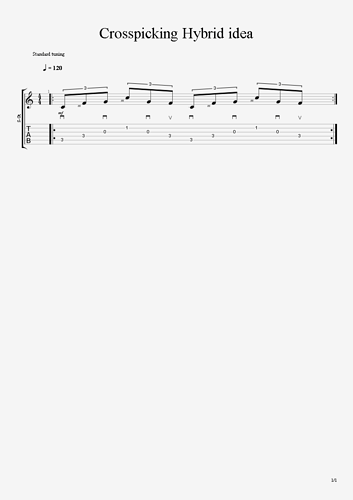@Troy . Many thanks. Just finished watching the Cross Picking workshop. So many great things in this. The analogies for how it feels and and should look were indeed valuable (and I feel kind of ungrateful for asking this) but if I may, I would like to throw up a suggestion for a base that I don’t see covered yet seems pretty fundamental (at least to my mind) and arguably more pertinent to cross picking.
I’d postulate that the player’s experience is looking down at their hand/wrist/arm more than it is looking in a mirror or a ‘magnet’ view. I wonder if a camera showing the actual player’s birds eye viewing angle (as if the camera was perched on your shoulder) would show something like the cross picking ‘left to right/ anti-string hopping arc’ in a more visually reassuring and (perhaps ultimately) directly transferable way. I get it would take up more screen real estate and editing time etc but even a little drop in would be of benefit perhaps? For the avoidance of doubt, I’m not suggesting a replacement to the magnet view but augmenting it.
Maybe it’s just my preference for visual learning but I sometimes find translating the magnet view to my actual playing experience a bit like this - Have an idea of the movements I want my hand to do but when I tell it do those movements it doesn’t get the right result or when I try and simulate the magnet view with a webcam I’m looking at the screen trying to make the movements look the same and then when I look at my hand (birds eye view) it starts doing a different movement’.
It’s maybe something you’ve already considered. In any case, I just thought I’d throw it out there.
Thanks again.
Steve






 ).
).